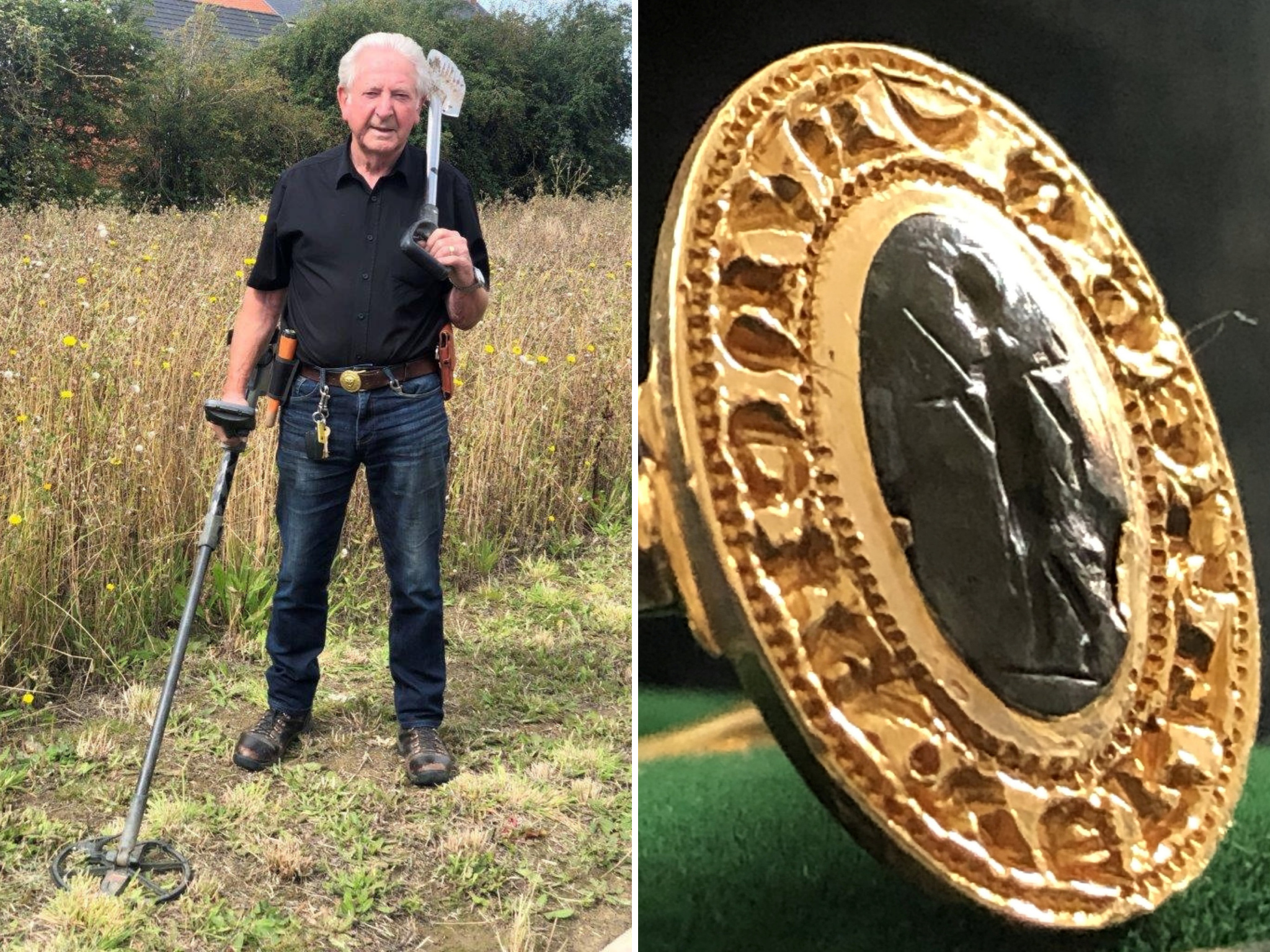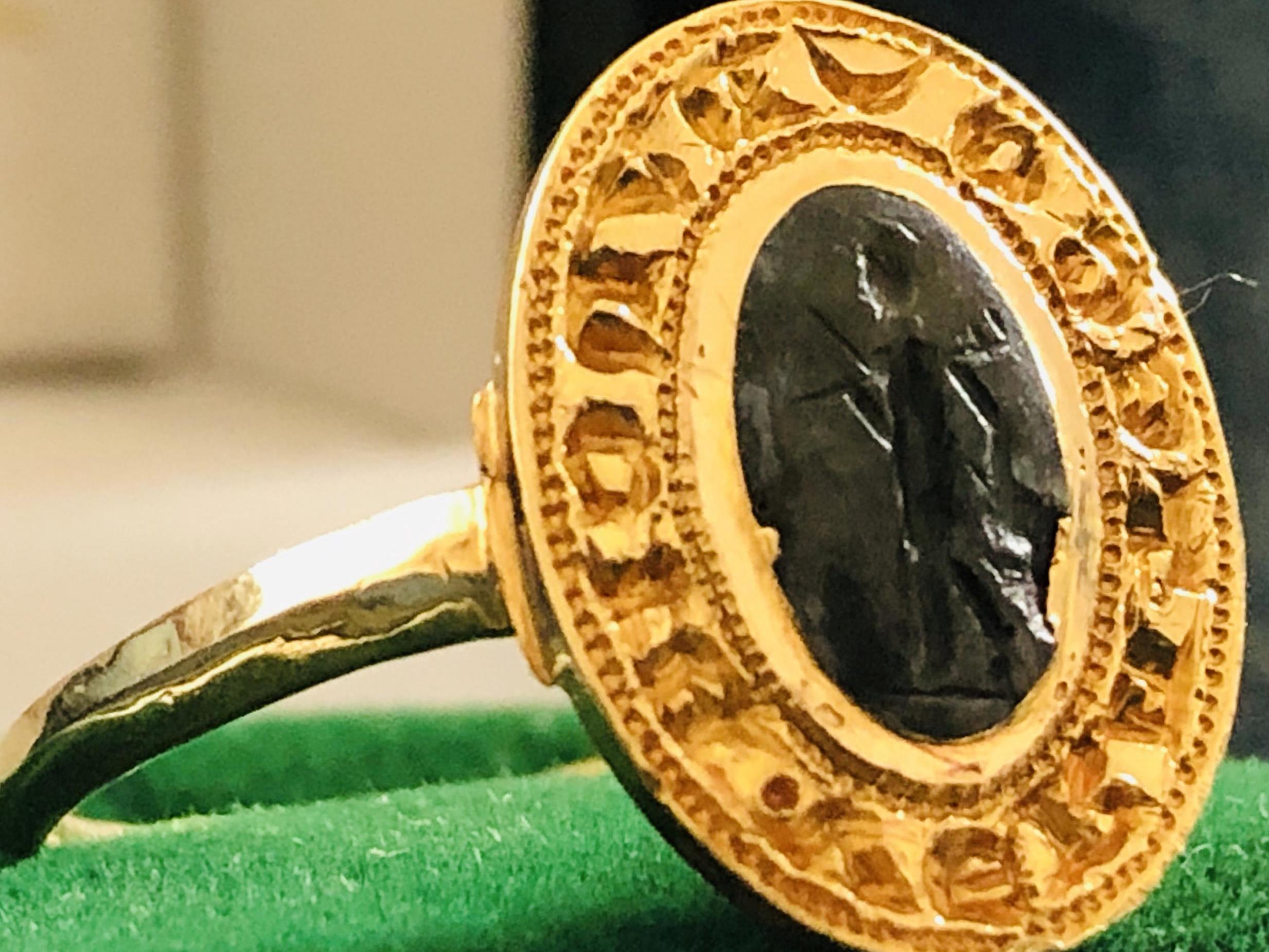Pensioner discovers ring found buried in field is medieval artefact worth up to £10,000
Metal detectorist left 670-year-old piece of jewellery in metal tin in garage for 40 years

Your support helps us to tell the story
From reproductive rights to climate change to Big Tech, The Independent is on the ground when the story is developing. Whether it's investigating the financials of Elon Musk's pro-Trump PAC or producing our latest documentary, 'The A Word', which shines a light on the American women fighting for reproductive rights, we know how important it is to parse out the facts from the messaging.
At such a critical moment in US history, we need reporters on the ground. Your donation allows us to keep sending journalists to speak to both sides of the story.
The Independent is trusted by Americans across the entire political spectrum. And unlike many other quality news outlets, we choose not to lock Americans out of our reporting and analysis with paywalls. We believe quality journalism should be available to everyone, paid for by those who can afford it.
Your support makes all the difference.A metal detectorist dug up a rare gold ring and kept it in his garage for 40 years only to discover it was medieval treasure worth up to £10,000.
Tom Clark, 81, first found the piece of jewellery in 1979 while searching a plot of farmland just outside his home town of Aylesbury, in Buckinghamshire.
Without realising its true value, he put the ring inside a metal tin and left it inside a garage, where it remained forgotten for decades.
It wasn’t until he began sorting through items from his mother’s house after her death that Mr Clark came across the seal ring again by chance.
He decided to get it valued and was shocked to discover it was a 670-year-old medieval artefact dating back to 1350.
The fourteenth century ring bears a Latin inscription and contains what is thought to be a semi-precious intaglio – an image incised or engraved into a material.
It is now set to be sold at Hansons Auctioneers’ Historica and Metal Detecting Finds Auction in Etwall, Derbyshire, on 27 August for an estimated £8,500 to £10,000.
Mr Clark said: “I had completely forgotten about it.
“At the time I’d only been metal detecting for 10 years and didn’t realise the ring was anything special. It was all twisted and broken when I dug it up.
“I took it to a museum along with a lot of other rings I’d come across so they could record the finds.
“I went back a week later and they told me the rings were all fairly modern and gave them back to me.
“So, I put them all in a tin and left them in the garage at my mother’s house where I was living at the time. Back then I would have been in my 30s.

“A few months ago, I was sorting through some stuff in my own garage that had come from my mother’s house and there it was – the tin with the rings in it.”
Mr Clark said he knows a lot more now after 50 years spent metal detecting and realised “straight away” that the ring dated back to about 1350 when he came across it in the garage.
He added: “I took it back to my local museum and the find has now been recorded.
“It’s the highest carat gold and would have belonged to someone of importance due to its decoration and quality.
“The dark green intaglio features the god Mars holding a spear and trophy. It’s rare and elegant. I’d love to know who it belonged to.”
Mark Becher, historica expert at Hansons, said: “The ring bears a Latin inscription (NVNCIE.VERA.TEGO) which may translate as ‘I hide the true message’.
“This could relate to the role of a seal ring in securing correspondence.”
SWNS contributed to this report.
Join our commenting forum
Join thought-provoking conversations, follow other Independent readers and see their replies
Comments